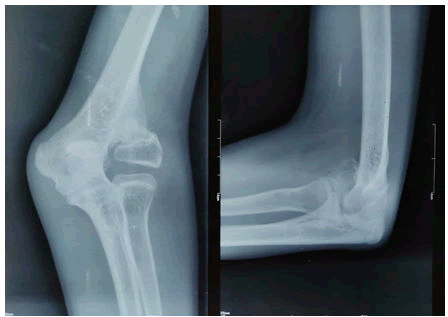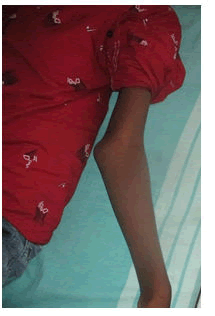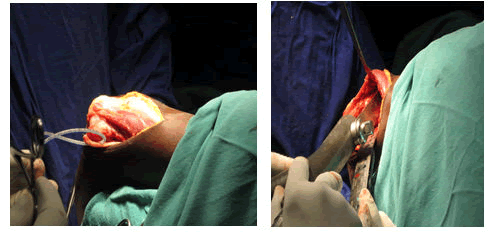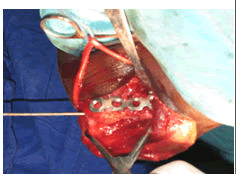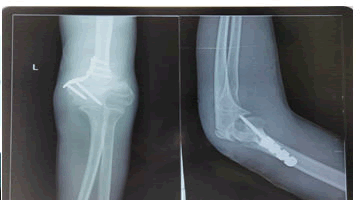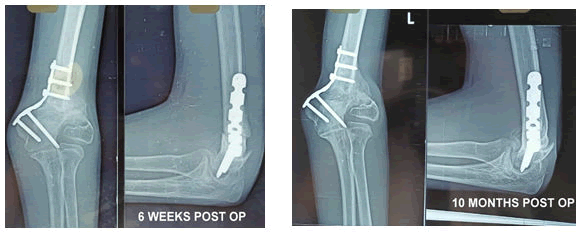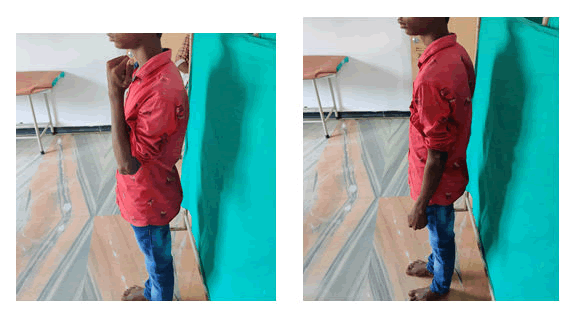Remarkable Outcome of a 11 year old Non - union Lateral Condyle Fracture of Humerus with Cubitus Valgus Deformity and Tardy Ulnar Nerve Palsy .
Aakanksh Tonda
Aakanksh Tonda*
Department of Orthopaedics, SVS Medical college and Hospital, Mahbubnagar, Telangana. India
- *Corresponding Author:
- Aakanksh Tonda
Department of Orthopaedics, SVS Medical college and Hospital, Mahbubnagar, Telangana. India
Tel:919916304839
E-mail: aakankshtonda@gmail.com
Received Date: June 09, 2021; Accepted Date: October 19, 2021; Published Date: October 29, 2021
Citation: Tonda A (2021) Remarkable Outcome of a 11 year old Non-union Lateral Condyle Fracture of Humerus with Cubitus Valgus Deformity and Tardy Ulnar Nerve Palsy. J Clin Exp Orthop Vol. 7 No: 6.
Introduction
Fractures of lateral condyle comprise almost 18% of all distal end humerus fractures in children, usually with delayed presentation. Tardy ulnar nerve palsy may occur as a consequence of non-union of lateral condyle resulting in cubitus-valgus (gun stock deformity) [1-4].
Case-report
A 16 year old boy complains of deformity over left elbow since 11 years exaggerated since 1 year with tingling and numbness radiating to 4th-5th digits.
Father gives h/o injury to left elbow at age of 5 years due to fall, taken to native-osteopaths and subjected to massages-bandages, with pain and restricted movements still persisting he neglected the deformity condition by reducing activity and occasionally taking analgesics [5-8].
Radiograph shows Milch type ΙΙ non-union fracture at lateral condyle of humerus with cubitus-valgus deformity.
Discussion
After thorough examination of topography, deformity was corrected with closed medial wedge osteotomy and plating by posterior approach with anterior transposition of ulnar nerve.
Post-operatively left elbow was immobilized for 3 weeks after which movements were encouraged. With persistent motivation and supervised physiotherapy, he regained complete range of movements, ulnar neuropathy resolved progressively and performed daily activities independently.
Conclusion
Management of established non-union of lateral humeral condyle is controversial as osteosynthesis reduces movements or bony non union may occur. However corrective wedge osteotomy along medial cortex and transpositioning of ulnar nerve resolves deformity by correcting carrying angle and prevent further neuropathy. Hence meticulous planning and adequate fixation would improve the performance of elbow joint and prevent neurogenic deficits [9,10].
References
- Park H, Hwang JH, Kwon YU, Kim HW. Osteosynthesis in situ for lateral condyle nonunion in children. J Pediatr Orthop. 2015; 35(4): 334-340.
- Gallay SH, McKee MD. Operative treatment of nonunions about the elbow. Clinical Orthopaedics and Related Research (1976-2007). 2000; 370: 87-101.
- Hung NN. Kirschner Wire Fixation of Neglected Lateral Condylar Fracture of the Humerus in Children. Open Access Library Journal. 2017; 4(1): 1-9.
- Suchinder A, Chittaranjan K, Venkatesh D. A study of functional outcome of correction of cubitus varus deformity by stepcut translation osteotomy. Int J Orthop. 2017; 3(4): 274-284.
- Edwardson SA, Murray O, Joseph J, Duncan R. Paediatric supracondylar fractures: an overview of current management and guide to open approaches. Orthopaedics and Trauma. 2013; 27(5): 303-311.
- Annan IH, Moran M. (i) Indications for internal fixation of fractures in children. Current Orthopaedics. 2006; 20(4): 241-55.
- Keating J, Hooper G, Robb J. REGIONAL INJURIES. Textbook of Orthopaedics, Trauma and Rheumatology. 2008.
- Ratliff AH, Dixon JH, Magnussen PA, Young SK. Selected References in Orthopaedic Trauma. Springer Science & Business Media; 2012.
- Trompeter A, Elliott D, editors. Trauma for the FRCS (Tr+ Orth) Examination. Oxford University Press; 2015.
- Banaszkiewicz PA, Kader DF, editors. Postgraduate orthopaedics: the candidate's guide to the FRCS (Tr and Orth) examination. Cambridge University Press; 2012.
Open Access Journals
- Aquaculture & Veterinary Science
- Chemistry & Chemical Sciences
- Clinical Sciences
- Engineering
- General Science
- Genetics & Molecular Biology
- Health Care & Nursing
- Immunology & Microbiology
- Materials Science
- Mathematics & Physics
- Medical Sciences
- Neurology & Psychiatry
- Oncology & Cancer Science
- Pharmaceutical Sciences
